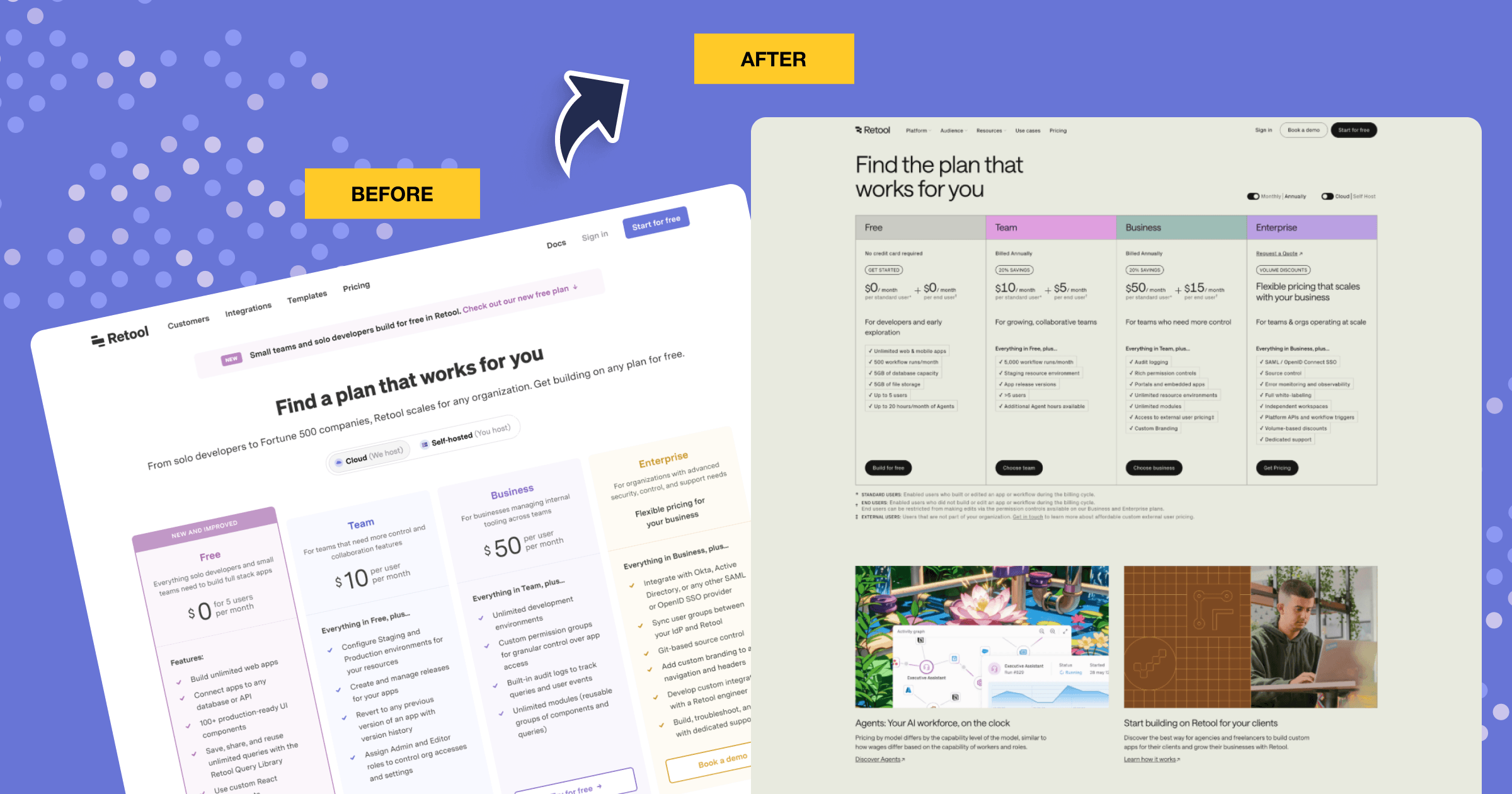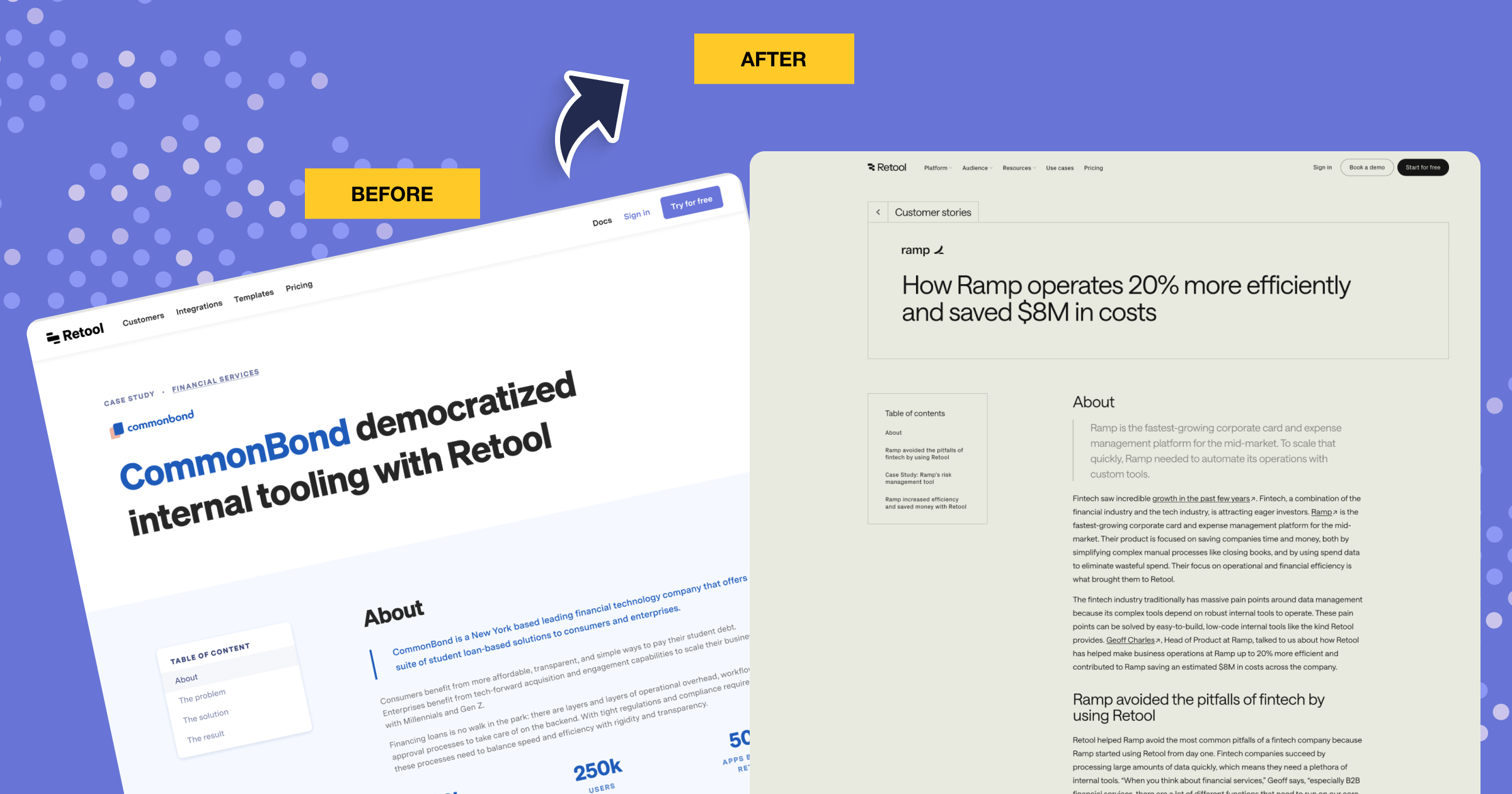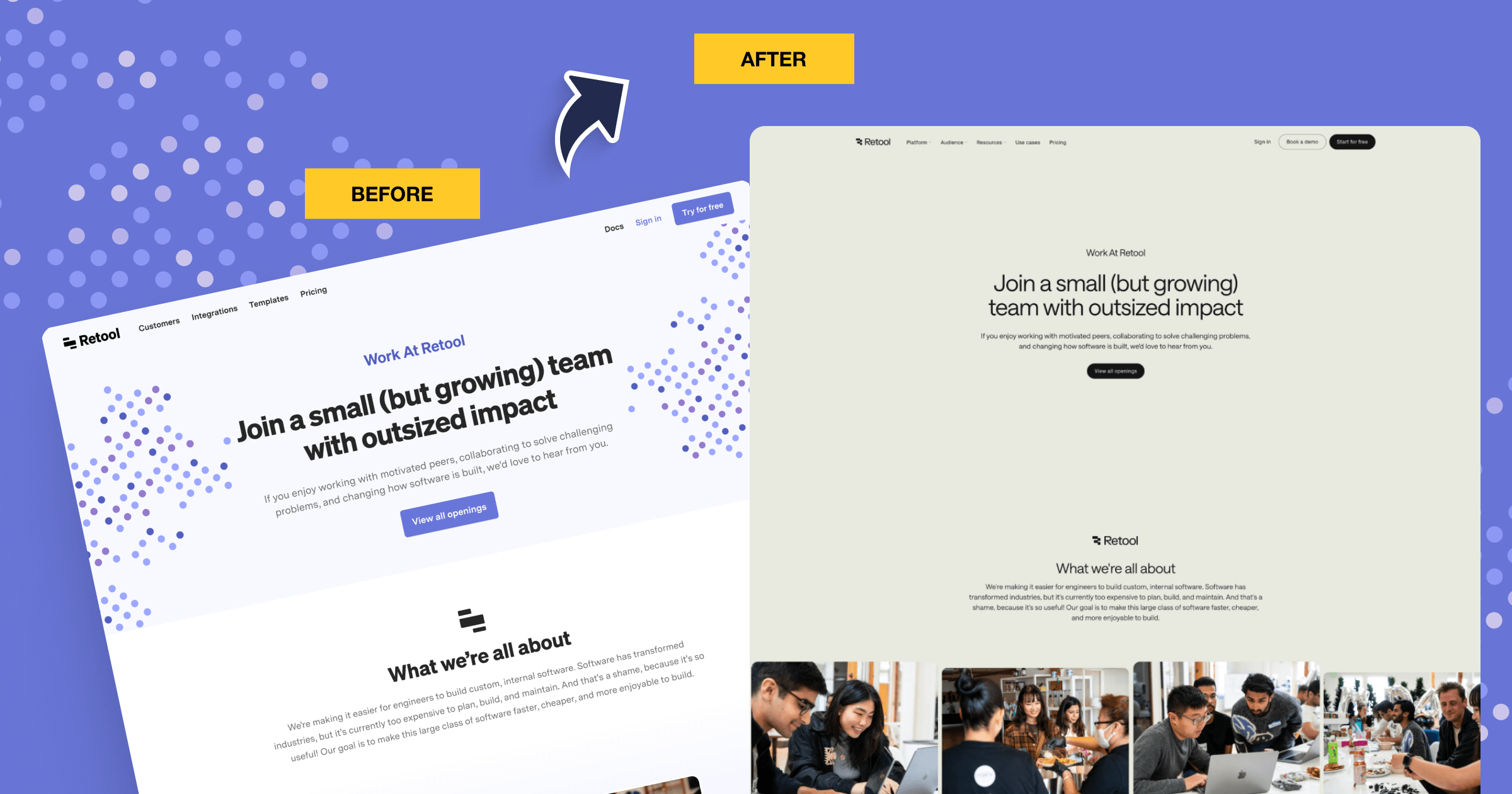By 2021, Retool had firmly established itself as a must-have tool for developers building internal software. With a fast-growing user base and a product that was evolving quickly, the team needed a website that could reflect their momentum and support their next phase of growth.
That’s when Retool brought in Webstacks.
We were tasked with redesigning core touchpoints, building a more immersive integration experience, and establishing a flexible foundation for their internal teams to move faster. From strategy to execution, our work focused on scalability, clarity, and long-term adaptability.
Modern UX for High-Stakes Pages
We started with the homepage and pricing page—two of the most influential points in any product-led website. These pages had to do more than just look good. They needed to clearly communicate value, showcase product depth, and drive the right actions.
Our team reimagined the homepage and pricing page to meet the moment for a fast-scaling product like Retool. These updates were foundational changes designed to sharpen the brand narrative, guiding technical audiences with clarity and driving more qualified conversions.


All this was powered by a new modular design system that brought structure to the user journey, created visual consistency across the site, and provided internal teams with the building blocks to evolve content on their terms.
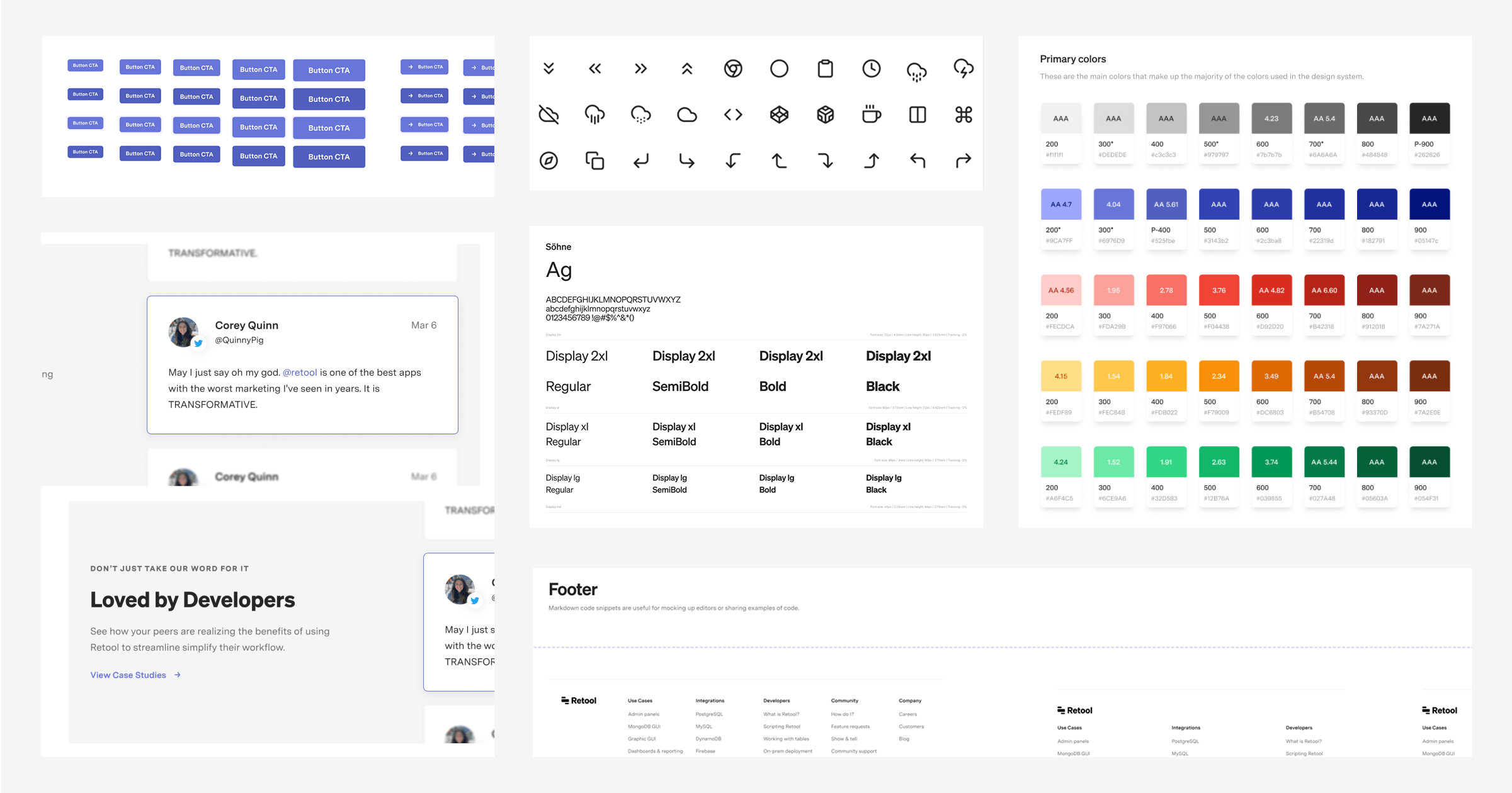
Integrations Reengineered for Scale
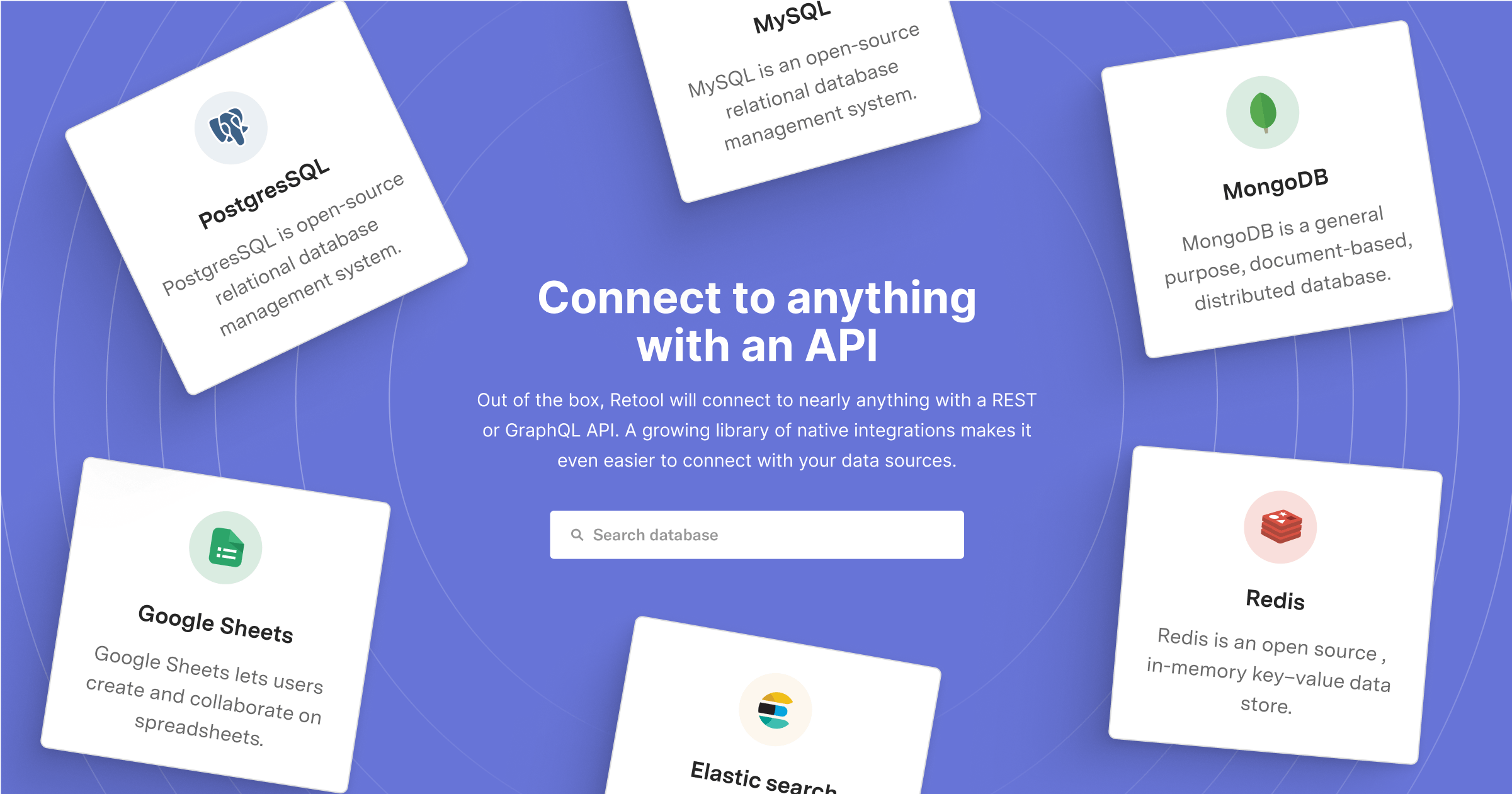
As Retool’s ecosystem of integrations expanded, the original static landing with a short list of partners was no longer cutting it. The product marketing team needed a system that could scale with their go-to-market strategy, highlight key partnerships, and empower non-technical contributors.
We transformed the experience by introducing:
- A dynamic integrations listing page with improved discoverability
- Rich integration detail pages featuring custom CTAs and relevant content
- A Contentful-powered publishing model, giving marketers full editorial control
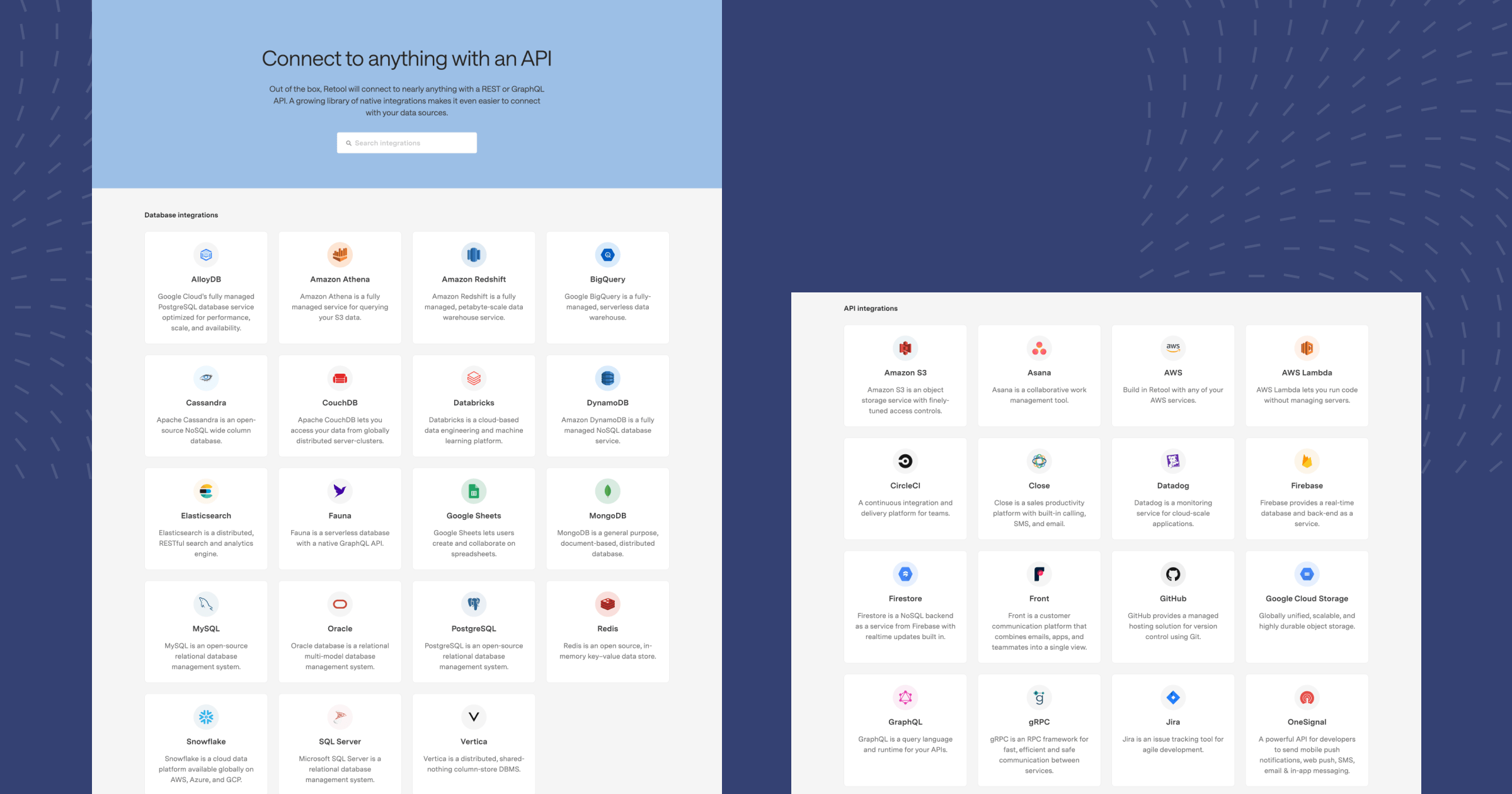
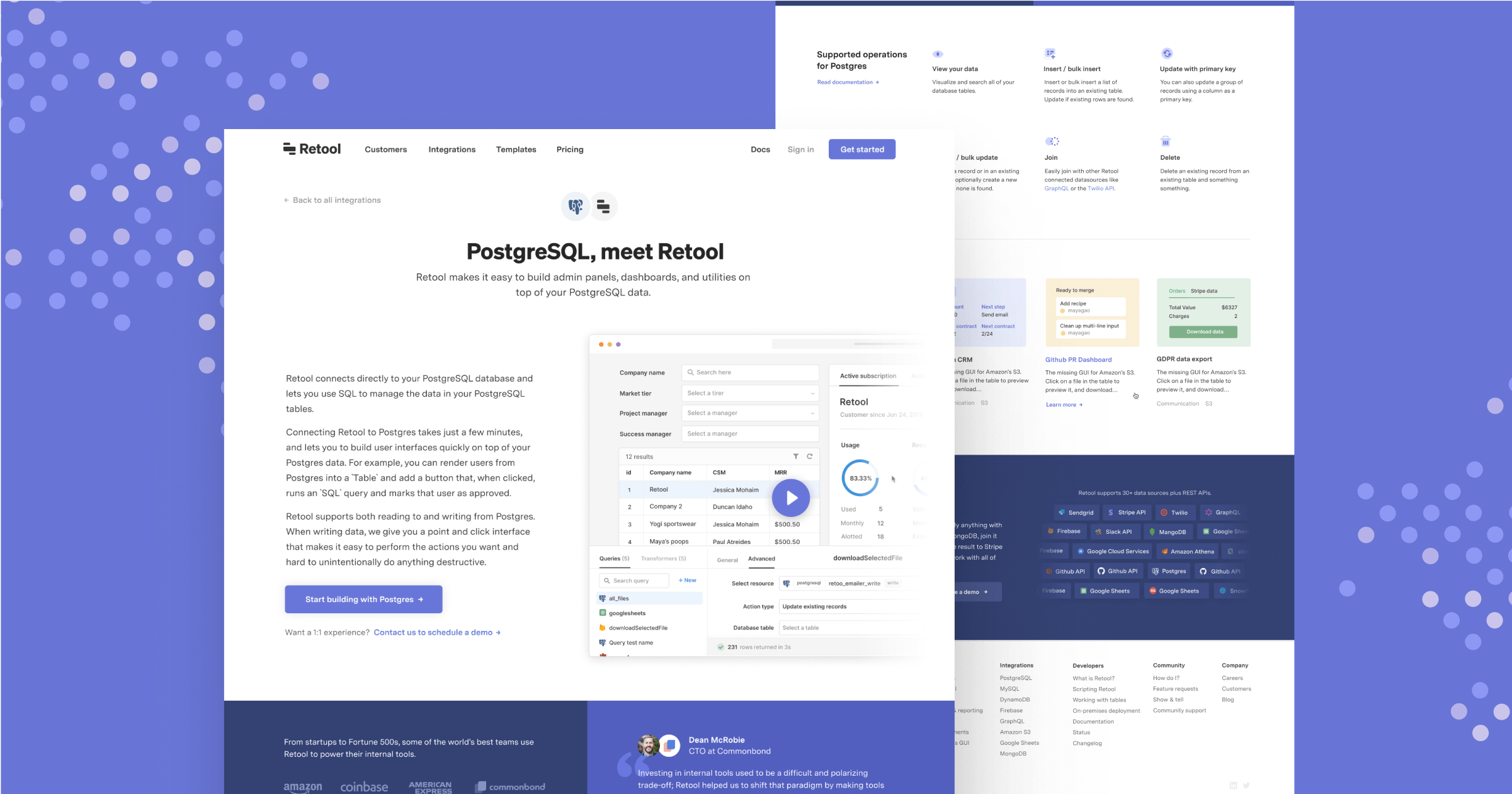
This shift gave the product marketing team ownership of a critical surface of the site, unlocking SEO value and enabling faster updates as new integrations launched.
A Design System That’s Still Paying Dividends
Our impact extended well beyond a few high-traffic pages. We implemented the same scalable approach we bring to every high-growth B2B tech partner: a composable, component-based architecture built for speed, flexibility, and longevity. That foundation is still powering Retool’s website today.
Even after the end of our engagement and the company’s major rebrand in late 2024, core pages continue to run on the structure we originally designed—visually refreshed, but architecturally intact. It’s a lasting example of how a well-built system can evolve with the brand without ever needing to start from scratch.
That longevity is a result of deliberate planning. We designed components to give Retool’s teams the ability to evolve content, test layouts, and expand sections without relying on designers and developers to overhaul everything, every time. It’s a powerful example of how sound, modular web architecture creates long-term leverage.
Strategic Infrastructure for Developer-First Brands
Developer tools companies move fast, and their websites need to keep up. They require performance, flexibility, and publishing autonomy for both product and marketing teams. That’s exactly what we delivered for Retool.
By focusing on modularity, composability, and scalable content infrastructure, we provided Retool with a foundation that could grow alongside its platform. And in doing so, we demonstrated what’s possible when you combine strong design systems with modern headless technology: faster time to market, better user experiences, and fewer blockers for high-performing teams.

